new posts in all blogs
Viewing Blog: , Most Recent at Top
Results 1 - 25 of 59
Statistics for
Number of Readers that added this blog to their MyJacketFlap:
If you are like us, shopping is tops on your to-do list this season. Finding the perfect present can be tricky and so here are a few of our favorites that are perfect for the little reader in your family.
Snowy books for a cold winter’s day
Have you read The Mitten more times than you can count? Tuktuk: Tundra Tale by Robin Currie is a fun take on the familiar story.
 As the sun begins to set, arctic animals scurry to prepare for six months of darkness and cold. Tuktuk the collared lemming is almost ready for the long winter night – all he needs is warm fur to line his nest. When one furry kamik (boot) slips off an Inuit driver’s sled, Tuktuk is in luck! But as he drags it home, Putak the polar bear, Aput the arctic fox, and Masak the caribou eye this little lemming’s prize and want it for their own. Can Tuktuk outwit the other animals and convince them that one furry kamik is no good for anyone bigger than a lemming?
As the sun begins to set, arctic animals scurry to prepare for six months of darkness and cold. Tuktuk the collared lemming is almost ready for the long winter night – all he needs is warm fur to line his nest. When one furry kamik (boot) slips off an Inuit driver’s sled, Tuktuk is in luck! But as he drags it home, Putak the polar bear, Aput the arctic fox, and Masak the caribou eye this little lemming’s prize and want it for their own. Can Tuktuk outwit the other animals and convince them that one furry kamik is no good for anyone bigger than a lemming?
When ancient creatures are a favorite, try Wandering Woolly! Andrea Gabriel’s love of woolly mammoths blends a variety of extinct animals with a tale of getting into trouble and trusting your instincts.
 Little Woolly leaves her mother behind as she chases a toad down to the river. When the glacial ice breaks, she is swept away in the rumbling, rolling water. Now alone, the mammoth calf struggles to survive. She must sneak past cave lions, bears, saber-toothed cats and humans. Exhausted and afraid, she must even hide from stormy weather as she fights her way back to her herd. How can she find them? Will she ever get back?
Little Woolly leaves her mother behind as she chases a toad down to the river. When the glacial ice breaks, she is swept away in the rumbling, rolling water. Now alone, the mammoth calf struggles to survive. She must sneak past cave lions, bears, saber-toothed cats and humans. Exhausted and afraid, she must even hide from stormy weather as she fights her way back to her herd. How can she find them? Will she ever get back?
It’s a Mystery!
Whether it is a contest for the most dangerous beast in all the land or a race to find the thief, these two books will keep kids guessing until the end.
 Dangerous animals from all over the world gather for the Most Dangerous Animal of All Contest. Snakes, spiders, sharks . . . who will the winner be? Deadly poison, huge teeth, razor -sharp horns, and fearsome feet are just a few of the ways that animals kill. Predators mean to kill. Prey simply defend themselves. And yet, the unexpected most deadly-animal doesn’t mean to harm at all!
Dangerous animals from all over the world gather for the Most Dangerous Animal of All Contest. Snakes, spiders, sharks . . . who will the winner be? Deadly poison, huge teeth, razor -sharp horns, and fearsome feet are just a few of the ways that animals kill. Predators mean to kill. Prey simply defend themselves. And yet, the unexpected most deadly-animal doesn’t mean to harm at all!
 Someone stole a cake from the cake contest—who could it be? Twelve animal bakers are potential suspects but Detective Duck uses his deductive reasoning skills to “quack” the case. After all, the thief left hairs behind so the thief wasn’t a bird. Follow along as he subtracts each suspect one at a time to reveal just who the culprit was. This clever story will have children of all ages giggling at the puns and the play on words. Key phrases for educators: subtraction, deductive reasoning, animal adaptations, puns/play on words.
Someone stole a cake from the cake contest—who could it be? Twelve animal bakers are potential suspects but Detective Duck uses his deductive reasoning skills to “quack” the case. After all, the thief left hairs behind so the thief wasn’t a bird. Follow along as he subtracts each suspect one at a time to reveal just who the culprit was. This clever story will have children of all ages giggling at the puns and the play on words. Key phrases for educators: subtraction, deductive reasoning, animal adaptations, puns/play on words.
When you can’t get enough rhythm and rhyme
Head to faraway places and meet unique animals as readers sing-song their way through these two books!
 Imaginations will soar from the forest floor, up through the canopy and back down again, following the circle of life. The jungle comes alive as children learn about the wide variety of creatures lurking in the lush Amazon rainforest in this clever adaptation of the song “The Green Grass Grew All Around.” Search each page to find unique rainforest bugs and butterflies hiding in the illustrations. Delve even deeper into the jungle using sidebars and the “For Creative Minds” educational section, both filled with fun facts about the plants and animals, how they live in the rainforest and the products we use that come from the rainforest.
Imaginations will soar from the forest floor, up through the canopy and back down again, following the circle of life. The jungle comes alive as children learn about the wide variety of creatures lurking in the lush Amazon rainforest in this clever adaptation of the song “The Green Grass Grew All Around.” Search each page to find unique rainforest bugs and butterflies hiding in the illustrations. Delve even deeper into the jungle using sidebars and the “For Creative Minds” educational section, both filled with fun facts about the plants and animals, how they live in the rainforest and the products we use that come from the rainforest.
 From the “crocodile’s dentist,” to the “mongoose spa,” Animal Partners takes a whimsical look at symbiotic relationships of animals large and small. Although many animals live in groups of the same kind, here you will learn how some animals form unique partnerships with different species. After all, don’t we all need a little help from our friends?
From the “crocodile’s dentist,” to the “mongoose spa,” Animal Partners takes a whimsical look at symbiotic relationships of animals large and small. Although many animals live in groups of the same kind, here you will learn how some animals form unique partnerships with different species. After all, don’t we all need a little help from our friends?
We hope this list makes your holiday shopping easier. Visit our online store for great deals on these titles with the code HOLIDAY30.


By: Arbordale Publishing,
on 11/4/2016
Blog:
(
Login to Add to MyJacketFlap)
JacketFlap tags:
Featured Books,
Arbordale Posts,
games,
children's book,
senses,
coloring,
logic,
sudoku,
new author,
Add a tag

When you visit your favorite restaurant can you smell the food even before walking inside? Can you feel the difference between the soft fur of a puppy and the cold wet nose? If a bright red bird swoops by, can you identify what kind of bird it is just by color? Should you pay to use your senses?
That is the premise for A Case of Sense; a new book by author Songju Ma Daemicke illustrated by Shennen Bersani. The book opens with a young boy playing outside, and greedy Fu Wang has cooked wonderful Chinese dishes with the smells wafting throughout town. He announces that the townspeople must pay for the smells and when they don’t he takes everyone to court! The judge has a clever way to deal with the case and readers might use a little logical reasoning to figure out the puzzle.
Saturday, Songju will be signing at the ISLMA conference in Tinley Park, IL from 2pm-4pm. In celebration, we have a fun little puzzle in logic and sight that might keep kids coloring for a little while!

Get out the markers or the crayons and color in the missing spaces. Remember that all the colors will be rows, columns, and squares of 9 without repeating!
Download the printable PDF version!
Download the answers here!


By: Arbordale Publishing,
on 10/27/2016
Blog:
(
Login to Add to MyJacketFlap)
JacketFlap tags:
Special Days,
Featured Books,
bat facts,
Arbordale Posts,
bat books,
bat conservation,
bat habitats,
bat week,
Children's Books,
Halloween,
picture books,
Add a tag
It is Bat Week! Did you know that bats are needed to control pests, spread seeds, and pollinate plants? Scientists learn a lot about the welfare of bat populations based on the crops that they help grow. And on October 31st we may be spooked out by the nocturnal winged creatures, but did you know that they help make the chocolate in our trick-or-treat bags?
Bat week is all about helping conserve the more than 1,100 species that live on every continent except Antarctica, and Bat Conservation International has many different ways that you can help bats that live in your neighborhood. Check it out!
If you want to get the facts first, here is an Arbordale booklist that will make you go batty!
 Home in the Cave – by Janet Halfmann, illus. by Shennen Bersani
Home in the Cave – by Janet Halfmann, illus. by Shennen Bersani
Baby Bat loves his cave home and never wants to leave it. While practicing flapping his wings one night, he falls, and Pluribus Packrat rescues him. They then explore the deepest, darkest corners of the cave where they meet amazing animals—animals that don’t need eyes to see or colors to hide from enemies. Baby Bat learns how important bats are to the cave habitat and how other cave-living critters rely on them for their food. Will Baby Bat finally venture out of the cave to help the other animals?
 Little Red Bat – by Carole Gerber, illus. by Christina Wald
Little Red Bat – by Carole Gerber, illus. by Christina Wald
Red bats can hibernate or migrate to warmer regions during the winter. Should this solitary little bat stay or should she go? That’s the question the little red bat ponders as the leaves fall and the nights get colder! Some animals, such as the squirrel, tell her to stay. But what about the dangerous creatures that hunt red bats in winter? The sparrow and others urge her to go. But where? Carole Gerber takes young readers on an educational journey through one bat’s seasonal dilemma in Little Red Bat. Imaginative illustrations by Christina Wald give little red bat charm and personality, and children will be waiting and wondering what will happen next. Will the little red bat stay put or migrate south for safety and warmth?
 The Rainforest Grew All Around – by Susan K. Mitchell, illus. by Connie McLennan
The Rainforest Grew All Around – by Susan K. Mitchell, illus. by Connie McLennan
Imaginations will soar from the forest floor, up through the canopy and back down again, following the circle of life. The jungle comes alive as children learn about the wide variety of creatures lurking in the lush Amazon rainforest in this clever adaptation of the song “The Green Grass Grew All Around.” Search each page to find unique rainforest bugs and butterflies hiding in the illustrations. Delve even deeper into the jungle using sidebars and the “For Creative Minds” educational section, both filled with fun facts about the plants and animals, how they live in the rainforest and the products we use that come from the rainforest.
 Deep in the Desert – by Rhonda Lucas Donald, – by Rhonda Lucas Donald, illus. by Sherry Neidigh
Deep in the Desert – by Rhonda Lucas Donald, – by Rhonda Lucas Donald, illus. by Sherry Neidigh
Catchy desert twists on traditional children’s songs and poems will have children chiming in about cactuses, camels, and more as they learn about the desert habitat and its flora and fauna. Tarkawara hops on the desert sand instead of a kookaburra sitting in an old gum tree. And teapots aren’t the only things that are short and stout—just look at the javelina’s hooves and snout. Travel the world’s deserts to dig with meerkats, fly with bats, and hiss with Gila monsters! Whether sung or read aloud, Deep in the Desert makes learning about deserts anything but dry.
 And Coming in spring of 2017 Bat Count: A Citizen Science Story
And Coming in spring of 2017 Bat Count: A Citizen Science Story
by Anna Forrester, illus. by Susan Detwiler
Jojo is prepping for an exciting night; it’s time for the bat count! Bats have always been a welcome presence during the summers in the family barn. But over the years, the numbers have dwindled as many bats in the area caught White Nose Syndrome. Jojo and her family count the bats and send the numbers to scientists who study bats, to see if the bat population can recover. On a summer evening, the family quietly makes their way to the lawn to watch the sky and count the visitors to their farm.


By: Arbordale Publishing,
on 9/27/2016
Blog:
(
Login to Add to MyJacketFlap)
JacketFlap tags:
picture books,
Education,
animals,
children's book,
book launch,
Featured Books,
nonficiton,
Arbordale Posts,
animal legs,
Add a tag
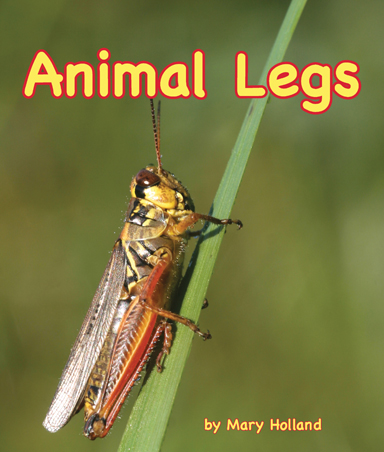
Bend your knees or jump up and down, how do you use your legs?
Compare how your legs work with the action of a frog’s legs or the webbing of an otter’s feet in Mary Holland’s new release Animal Legs. This is the third book in the Animal Anatomy & Adaptations series, and a perfect place for young readers to find amazing facts about the lives of animals found in their backyard.
We asked Mary Holland about her inspiration for Animal Legs and here is part of that interview.
A: Whose Animal Legs do you find most interesting?
MH: I’m afraid this is too hard a question to answer, as I find the many different ways that animals use their legs equally interesting. One of my favorites is a mole’s front paws. They look just like paddles to me, and the perfect tools to dig with. I also find the flap of  skin that goes from a flying squirrel’s front legs to its back legs and allows it to glide through the air a remarkable adaptation. The fact that katydid ears are on their legs is pretty amazing, too!
skin that goes from a flying squirrel’s front legs to its back legs and allows it to glide through the air a remarkable adaptation. The fact that katydid ears are on their legs is pretty amazing, too!
A: Is there an animal/fact that you wish you could have included in the book or series but it just didn’t fit?
MH: There are so many animals that have such interesting feet and legs that I can’t even begin to count them, but one group that may have the most is insects. I could only fit a few of them in the book. Grasshoppers “sing” by rubbing their legs against their wings! Have you ever looked closely at a cicada’s front legs? They are pretty scary looking! Butterflies taste with their feet!
A: What is the most unusual predicament you have faced photographing an animal?
MH: I got very close to a young skunk in order to photograph it, and before I knew it, I was covered with skunk spray.
I once was trying to find a porcupine at night that was up in a tree, screaming its head off, and suddenly it fell to the ground about three feet from me. I almost had a head full of quills!
I was tracking a bobcat in late spring that had crossed a beaver pond, and the ice, which had started to melt, gave way (I weighed a lot more than the bobcat) and I fell through the ice into the cold water with snowshoes on. Fortunately, I could touch bottom with the tips of my snowshoes and managed to get out of the pond!
A: What would you like to share with young children about your love for nature?
MH: I feel so very lucky, as each day I get to discover something new. I never know what I’m going to find. I head outdoors, and go on what is to me very much like an Easter egg hunt – I look for animals and their signs and rarely do I come home without having found something new to observe and admire.
A: What do you have coming up next?
MH: I am working on two books. One is called Naturally Curious Day by Day. It describes two or three different animals or plants that you might see each day of the year. I am also writing a book called Otis the Owl, about a young barred owl.
Otis the Owl will fly onto bookshelves in the spring of 2017.
Learn more about Mary’s new book Animal Legs on Arbordale Publishing’s website. For daily updates with amazing animal facts and photos, follow Mary’s blog Naturally Curious with Mary Holland.


By: Arbordale Publishing,
on 9/19/2016
Blog:
(
Login to Add to MyJacketFlap)
JacketFlap tags:
Children's Books,
picture books,
book release,
crocodile,
Book Launches,
children's craft,
Featured Books,
Arbordale Posts,
educational activities,
After A While Crocodile,
brady barr,
crocodile craft,
Add a tag

Do you want to spy a reptile?
This week we celebrate the release of After A While Crocodile by Dr. Brady Barr and Jennifer Keats Curtis with illustrations by Susan Detwiler.
In the book, a young girl, Alexa, raises an American crocodile with her class in Costa Rica. The story is her science journal of the experience as the crocodile hatches, grows, and swims off after he is released.
Dr. Brady Barr knew he wanted to work with reptiles after spotting his first alligator in the Florida Everglades. Since, he has traveled the world seeking out lizards, snakes, and other creatures to learn more about the 24 different species. In fact, he is the only one to have  captured all 24 species in the wild. Readers can watch Brady Barr comb the jungles, forests, and rivers seeking out reptiles on his Nat Geo Wild show Dangerous Encounters with Brady Barr that airs on Saturdays at 10:30.
captured all 24 species in the wild. Readers can watch Brady Barr comb the jungles, forests, and rivers seeking out reptiles on his Nat Geo Wild show Dangerous Encounters with Brady Barr that airs on Saturdays at 10:30.
Co-author Jennifer Keats Curtis is most often found in the wild classrooms of Maryland talking with students about animal conservation and how she helps wildlife by telling stories.
Susan Detwiler’s illustrations bring Jefe and Alexa to life with her detailed realistic style. Like Jennifer, Susan is often found in classrooms talking about her art and love for children’s books.
If you want to spy your own crocodile, a trip on a plane might be in order. Get a copy of After A While Crocodile, download the For Creative Minds section to find out where these crocs live, and educators we have a teaching guide for you too! Visit the book’s homepage for all these downloadable extras. If you just can’t wait to start the croco-fun here is a simple craft for the little ones.
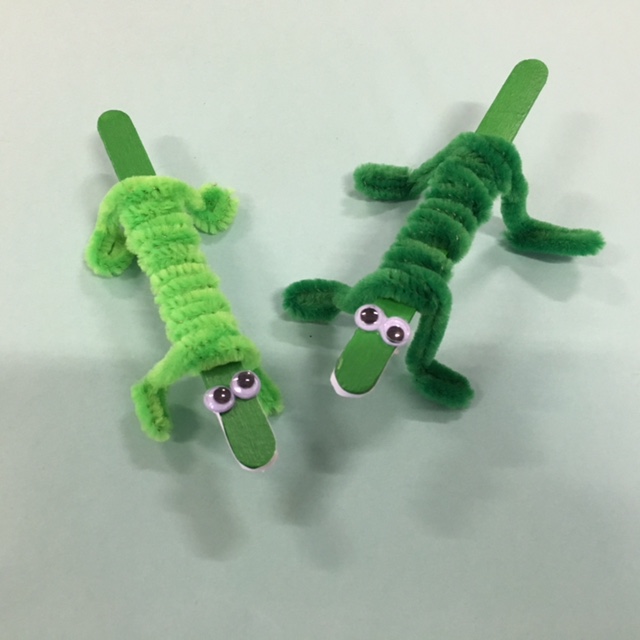
Simply use popsicle sticks and pipe cleaners. Paint the popsicle stick green, and then start in the middle and wrap one pipe cleaner toward the front leaving enough to bend for legs and feet. Then wrap the second pipe cleaner from the middle to the back, also leaving enough room for legs and feet. On the front glue googly eyes and cut teeth from some white paper and glue that to the end. Now you have a crocodile buddy!


By: Arbordale Publishing,
on 7/29/2016
Blog:
(
Login to Add to MyJacketFlap)
JacketFlap tags:
Children's Books,
reading,
animals,
Book Giveaway,
rainy day,
seashells,
kids craft,
summer craft,
Arbordale Posts,
indoor activity,
zoo craft,
Add a tag

Did you escape to the beach for a little summer vacation? We did and brought home a few souvenirs from our walks on the beach. Now that our prize shells are sitting on a shelf collecting dust, it’s time to put them to use with a fun craft idea.
Shell Animals! This is a perfect activity for a rainy day or before a trip to the zoo. You can get as creative and detailed as you want while learning about different traits of the animal that you want to create.

We kept the supplies simple – of course, shells are the number one ingredient, although we would suggest some larger ones for young children, ours are a little smaller than we would have liked. To decorate your shells you will need, some construction paper, scissors, markers, paint or both. You can also add googly eyes and pipe cleaners for more detail. We made a peacock, a tiger, and our bear came in the perfect color straight from the ocean!
Share your favorite shell creatures with us; tag @arbordalekids on Facebook, Twitter, Pinterest or Tumblr! We will send a matching book to our top favorites!
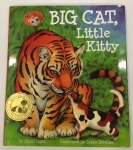




By: Arbordale Publishing,
on 7/1/2016
Blog:
(
Login to Add to MyJacketFlap)
JacketFlap tags:
Arbordale Posts,
4thofJuly,
chemisty,
history,
celebration,
Education,
science,
Fireworks,
physics,
Independence day,
Add a tag

Independence Day is here; this weekend fireworks will light up the sky around the nation in celebration. But…how are fireworks made? And…who thought to send brightly colored explosions into the sky?
For Arbordale celebration and science go hand in hand, so here is a quick history chemistry and physics lesson in fireworks!
History
The Chinese were experimenting with exploding tubes of bamboo as early as 200 B.C., but it wasn’t until 900 A.D. that Chinese chemists found a mix that when stuffed in bamboo and thrown in a fire produced a loud bang. Over the next several hundred years experimentation lead to the first rockets, but as fire power began to fly in the air, celebrations also began to light up the sky.
Soon firework technology began to spread across Europe to Medieval England. The popularity of celebrating war victories and religious ceremonies with fireworks displays grew. The Italian pyrotechnic engineers are first credited with adding color to their fireworks in the 1830’s. The Europeans brought their knowledge of fireworks to America, and the first recorded display was in Jamestown in 1608.
 John Adams predicted that fireworks would be part of the Fourth of July celebrations on July 3, 1776 with a letter to Abigail Adams where he said, “I am apt to believe that it will be celebrated by succeeding generations as the great anniversary festival. It ought to be commemorated, as the Day of Deliverance by solemn Acts of Devotion to God Almighty. It ought to be solemnized with Pomp and Parade, with Shews, Games, Sports, Guns, Bells, Bonfires and Illuminations from one End of this Continent to the other from this Time forward forever more.”
John Adams predicted that fireworks would be part of the Fourth of July celebrations on July 3, 1776 with a letter to Abigail Adams where he said, “I am apt to believe that it will be celebrated by succeeding generations as the great anniversary festival. It ought to be commemorated, as the Day of Deliverance by solemn Acts of Devotion to God Almighty. It ought to be solemnized with Pomp and Parade, with Shews, Games, Sports, Guns, Bells, Bonfires and Illuminations from one End of this Continent to the other from this Time forward forever more.”
And so on the first anniversary of the country and each year we celebrate with Pomp and Parade, ending the day with Illuminations!
The Science
The Chinese put bamboo in the fire and the air pocket would make a bang when it was heated to a certain temperature. Today we have much better technology and fireworks are a little more complicated. The basic science has not changed, but the delivery methods have gotten much more accurate and high tech giving celebrators a bigger better show.
We know a tube is our vehicle, but how does it travel to the sky?
A mix of combustible solid chemicals is packed into the tube, along with neatly arranged  metals. The metals determine the color (copper=blue/green, calcium=red), and the arrangement determines shape (circle, smiley faces, stars).
metals. The metals determine the color (copper=blue/green, calcium=red), and the arrangement determines shape (circle, smiley faces, stars).
When the heat activates the chemicals, the excitement begins. The reaction is started by either fire or electricity through a fuse. As the heat begins to travel into the tube the chemicals become activated that reaction produces other chemicals such as smoke and gasses. The chemical reaction creates the release of energy; the energy is converted into the heat, light, sound and movement that we see up in the sky.
Physics takes over!
The Conservation of Energy Law says that the chemical energy packed inside that tube is equal to the energy of the released plus the energy left after the reaction. A professional firework in a large tube packed with chemicals creates a much bigger light show and bang than a tiny firecracker that jumps with a small bang.
The fireworks fly because of Newton’s Third Law. “For every action, there is an equal and opposite reaction” When the gasses are released from the chemical reaction they shoot down with force cause the firework to lift up into the air.
Finally, Why are fireworks always symmetrical?
 Conservation of Momentum says that momentum must be the same before and after the explosion. In other words, when the explosion occurs the movement must be balanced.
Conservation of Momentum says that momentum must be the same before and after the explosion. In other words, when the explosion occurs the movement must be balanced.
Now that you have learned a little about the science behind fireworks enjoy watching them on this Independence Day. But remember, fireworks are dangerous and best left to the professionals!


By: Arbordale Publishing,
on 6/20/2016
Blog:
(
Login to Add to MyJacketFlap)
JacketFlap tags:
Arbordale Posts,
strawberry moon,
Arbordale picture books,
honey moon,
summer begins,
sun and moon phase,
Educational,
full moon,
summer solstice,
Special Days,
Add a tag
 Today is the summer solstice and the official first day of the season for those of us in the northern hemisphere. This year, the full moon known as the strawberry moon or honeymoon lands on the longest day of the year. The events last shared the same date in 1948.
Today is the summer solstice and the official first day of the season for those of us in the northern hemisphere. This year, the full moon known as the strawberry moon or honeymoon lands on the longest day of the year. The events last shared the same date in 1948.
What is so special about this day, and this moon?
Today the sun passes across the sky at its highest point. Likewise the moon crosses the sky at its lowest point creating a seemingly larger moon than the usual full moon. Because the summer air is humid and thick, the June moon can look like it has a yellow hue or halo around its perimeter, and possibly the reason for the name honeymoon.
The name strawberry moon comes from the Algonquin tribe, because the June full moon signaled that it was time to harvest the ripe berries in the Great Lakes and Canadian region where they lived.
Tonight the Farmer’s Almanac will be broadcasting a live high-powered telescope viewing of the moon. See that here, or just read some amazing facts about the special phases of the sun and moon http://www.almanac.com/blog/astronomy/astronomy/summer-solstice-full-moon-june.
Now head outside and enjoy the long days and warm weather while it lasts, there are only 184 days until winter!
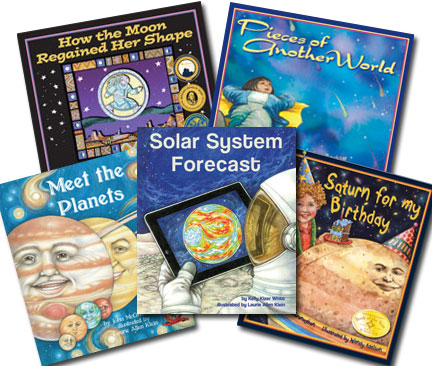


By: Arbordale Publishing,
on 6/9/2016
Blog:
(
Login to Add to MyJacketFlap)
JacketFlap tags:
Arbordale Posts,
Add a tag

We would like to present a reading list that kids and parents alike would enjoy for this summer. Kick back and relax with these books to explore what this season truly brings. Have fun in the sun while learning about animals from the ocean, salt marsh, zoo, and even your own backyard! Take a look at these books!:
Ocean Life:
 Ocean Hide and Seek
Ocean Hide and Seek
The sea is a place of mystery, where animals big and small play hide and seek! Can you imagine a shark hiding in the light? What about a clownfish in plain sight? Don’t believe it? Then, sink into the deep blue sea with Jennifer Evans Kramer and Ocean Hide and Seek! Surround yourself with the vibrant ocean illustrations of Gary R. Phillips. The ocean is an old, old place, and the exotic animals in the depths have learned to adapt to their surroundings to survive. Can you find the creatures hidden on every page? Or will you, too, be fooled by an ancient, underwater disguise?
 Ocean Seasons
Ocean Seasons
Seasons change in the ocean much as they do on land. Spring brings new plants and baby animals, while summer oceans are aglow with sparkly plankton lights, and autumn winds blow across the open water. In winter the humpback whales migrate to warmer waters, just as some land animals move to warmer climates. In fun, fanciful form, children learn about plants and animals that are joined through the mix of seasons, food webs and habitats beneath the waves. While set in the Pacific, similar changes occur in all the world’s ocean.
 Turtles in my Sandbox
Turtles in my Sandbox
Imagine finding turtle eggs in your sandbox! When a mother diamondback terrapin lays eggs in a young girl’s sandbox, the girl becomes a “turtle-sitter” to help the babies safely hatch. She raises the teeny hatchlings until they become big enough to fend for themselves in the wild. Then, with the help of experts, she releases them. Along the way, she learns about these unique animals and that she has made an important contribution to their survival. The “For Creative Minds” section includes terrapin fun facts and a turtle habitat craft.
 Turtle Summer: A Journal for my Daughter
Turtle Summer: A Journal for my Daughter
This is a companion book to Mary Alice Monroe’s novel,Swimming Lessons, the sequel to The Beach House. In the novel, the readers witness a young mother, Toy, writing a journal for her daughter, Little Lovie. This is the journal Toy is writing. Using original photographs, this scrapbook journal explains the nesting cycle of sea turtles and the natural life along the southeastern coast, including local shore birds, shells, and the sea turtle hospital. Adults and children will enjoy the images, information and the journal with or without the novel.
Zoo Day:
 Fibonacci Zoo
Fibonacci Zoo
When Eli and his father visit an unusual zoo, they count the creatures in each exhibit. Eli sees one alligator, then one bison, and next two camels. Soon a number pattern emerges and Eli thinks he can predict how many animals will be in the next exhibit. Explore the zoo with Eli as he runs ahead to test his hypothesis.
 ‘Twas the Day Before Zoo Day
‘Twas the Day Before Zoo Day
This delightful adaptation of ‘Twas the Night Before Christmas’, shares zoo keeper and animal preparations for the upcoming “Zoo Day.” But things aren’t going according to plan . . . The llamas won’t quit spitting, the giraffes are drooling, and the zebras aren’t happy at all with their stripes. Meanwhile, the zoo keepers are scurrying this way and that, cleaning up poop, ringing mealtime bells, and trying to get the animals bathed. Will “Zoo Day” go off without a hitch?
 What’s New at the Zoo?
What’s New at the Zoo?
Come along on an adding animal adventure at the zoo. Add baby animals to the adults to see how many there are all together. And while you are at it, learn what some of the zoo animals eat or what the baby animals are called. Follow the little lost red balloon as it soars through the zoo. At the end of the day, count up all the animals at the zoo.
Outdoor Fun:
 A Day in the Salt Marsh
A Day in the Salt Marsh
Enjoy A Day in the Salt Marsh, one of the most dynamic habitats on earth. Fun-to-read, rhyming verse introduces readers to hourly changes in the marsh as the tide comes and goes. Watch the animals that have adapted to this ever-changing environment as they hunt for food or play in the sun. An activity on adaptations is included in the “For Creative Minds” section.
 Habitat Spy
Habitat Spy
Let’s spy on plants, insects, birds, and mammals in 13 different habitats. Told in rhyming narrative, Habitat Spy invites children to search for and find plants, invertebrates, birds, and mammals and more that live in 13 different habitats: backyard, beach, bog, cave, desert, forest, meadow, mountain, ocean, plains, pond, river, and cypress swamp. Children will spend hours looking for and counting all the different plants and animals while learning about what living things need to survive.
 In my Backyard
In my Backyard
Baby dogs are puppies and they belong to a litter, but what is a baby skunk and what is the name of its group? This clever, rhythmic story tells us just that! Counting from one to ten, familiar backyard animals are introduced by baby and family group name. Each stanza also tells a bit more about each animal by providing clues as to what they eat, how they sound or where they live. The “For Creative Minds” section includes more animal fun facts, information on keeping a nature journal and how to watch for wildlife in your own backyard.
Woodland Life:
 A Cool Summer Tail
A Cool Summer Tail
When summer heats up, animals find ways to stay cool. In A Cool Summer Tail animals wonder how humans stay cool too. Do they dig under the dirt, grow special summer hair, or only come out at night? This companion to the popular A Warm Winter Tail features many of same animals but this time, with their summer adaptations, offering an important “compare and contrast” opportunity.
 Ferdinand Fox’s First Summer
Ferdinand Fox’s First Summer
Follow this young fox as he explores the world around him during the first few months of his life. He’s about a month old when he first comes out of the den. Watch as he explores the world around him, learning how to hunt through play and by using his senses. See the changes as he grows from a young kit to a young fox. After all, by the next summer, he’ll have children of his own! Naturalist photographer and environmental educator Mary Holland has captured Ferdinand’s First Summer in a way that is sure to grab children’s hearts.
Desert Life:
 Deep Desert
Deep Desert
Catchy desert twists on traditional children’s songs and poems will have children chiming in about cactuses, camels, and more as they learn about the desert habitat and its flora and fauna. Tarkawara hops on the desert sand instead of a kookaburra sitting in an old gum tree. And teapots aren’t the only things that are short and stout—just look at the javelina’s hooves and snout. Travel the world’s deserts to dig with meerkats, fly with bats, and hiss with Gila monsters! Whether sung or read aloud, Deep in the Desert makes learning about deserts anything but dry.
 Desert Baths
Desert Baths
All animals bathe to keep their bodies clean and healthy. Humans might use soap and water, but what do animals, especially those living in dry climates, do to keep clean? Darcy Pattison and Kathleen Rietz team up again to explore the desert to find out how snakes, spiders, and birds bathe. This surprising book teaches children about hygiene and how some exciting desert creatures manage to stay clean without the help of soap and water.


By: Arbordale Publishing,
on 5/26/2016
Blog:
(
Login to Add to MyJacketFlap)
JacketFlap tags:
Arbordale Posts,
Add a tag

A tornado in action.
Summer time is right around the corner! You may want to imagine the sun, sand on the beach, and fun doing outdoor activities. However, the dangers of tornado season continues on. In the United States, tornado season typically occurs from March through June depending on the region. The South and the Midwest are the areas where tornadoes occur the most often. Other countries around the world also endure these storms such as South Africa, Argentina, China, and the United Kingdom. Our book Tornado Tamer takes on the re-imagining of the tale, “The Emperor’s New Clothes” where a weasel weaver tricks a whole town into believing an imaginary cover can protect them from tornadoes. Though it is a hilarious situation within our book, tornadoes are a serious danger in real life. Tornadoes can go up to 300 miles per hour and can last up to 1 hour. The wind speeds alone can cause a lot of destruction including the loss of homes, businesses, and the lives of people and animals. To keep you informed and aware, these safety tips are important to know what to do in case the need to use them arises.
Before a Tornado:
- Practice tornado drills to know what to do in case one comes.
- Listen to local news or radio outlets to stay informed about tornado watches and warnings.
- Pick a safe room in your home or nearby building. Preferably a room that is underground without windows. An example is a basement.
- Board up windows if at your home and secure any items outdoors such as trash cans and furniture that can be picked up by the high speed winds.
- Prepare a disaster kit for your home or car if travel is necessary: First aid kit, flashlights, food, water, and a battery-operated radio/television if the electricity goes out.
During a Tornado:
- Go to the safe room that was chosen that is windowless.
- Get under a sturdy piece of furniture such as a table.
- Do not stay in mobile homes or cars because they offer minimal protection and immediately find shelter in a sturdy building.
- If stuck in a vehicle, keep your head down with the seat belt on below the windows and keep yourself covered with your hand.
- If stuck outdoors, find a low-lying area and lie flat away from roadways.
- Stay away from damaged areas.
After a Tornado:
- Check on others that are with you for injuries.
- Use the phone only for emergency situations.
- Stay tuned to news/radio outlets for updates and new information.
- Stay inside until it is reported safe to come out.
- Avoid power lines that were knocked down or submerged in water.
- Use a flashlight to inspect your home or building for damages.
Stay safe out there and use these tips!
Find out more about tornadoes and other kinds of storms with these books!:

Tornado Tamer
In this adaptation of “The Emperor’s New Clothes”, Mayor Peacock declares he will hire a tornado tamer to protect the town. After a long search, Travis arrives to fill the position and this weasel has a plan. He will build a very special, transparent cover to protect the town. Travis’ magical cover is so transparent that only those smart enough and special enough can even see it. Mouse is doubtful, but his questions are brushed off. Months later, the cover has been hung and Travis has been paid a hefty sum, but a tornado is in the distance and the town is in its path. Will the magic cover protect the town?

Ready, Set, … Wait!
Hurricane . . . just the word brings to mind the power of these natural disasters. Humans watch the news and know of impending arrival. We board up windows and gather supplies. We might huddle in our homes or go inland. Then we wait for the storm to arrive. But what do wild animals do? Do they know when a storm is coming? If so, how do they prepare? This book explains how nine animals sense, react, and prepare for a hurricane. Based on research or observations, the brief portraits are explained in simple, poetic language for children of all ages.

Prairie Storms
Cozy up for this great rainy day read! Prairie Storms gives you a front row seat to learn about a year of ever-changing prairie weather, and how the animals living in these grasslands adapt and survive in this harsh climate. Each month, read about a new animal, and learn about everything from how a prairie grouse can survive the January snows to how an earless lizards escapes the harsh, unrelenting drought of August. Told in lyrical prose, this story is a celebration of the great American prairies. See more about Prairie Storms at http://prairiestorms.com/.


By: Arbordale Publishing,
on 4/4/2016
Blog:
(
Login to Add to MyJacketFlap)
JacketFlap tags:
Zoos,
Science and World News,
albino animals,
animal helpers,
Sanctuaries,
Arbordale Posts,
wildlife rehabilitators,
picture books,
Education,
animals,
Aquariums,
Add a tag
Spring is here, and it’s a time of year when many baby animals are emerging from their winter hiding place. Some of those babies may be a little different.
Recently, Antler Ridge Sanctuary in New Jersey rescued a litter of eastern gray squirrels, but one of those squirrels had a pure white coat. The rare white fur means that the squirrel has a form of albinism.
A white coat with red eyes m eans that the animal is an albino. Some animals are leucistic;
eans that the animal is an albino. Some animals are leucistic;
these white-coated animals have their natural colored eyes but their lack of color makes them stand out from the other animals of the same species. Other animals are piebald; they have patches of albino white mixed with patches of their natural color.
The lack of color puts these special babies at risk. In a world of browns, greens, and greys the pure white is very hard to disguise from predators. Often albino animals, especially small prey animals such as squirrels are targeted by larger animals and don’t make it in the wild for very long.
Of course not all white animals have albinism, for example arctic animals such as polar bears and arctic foxes are white to blend with their surroundings.
However, without the help of rescuers many albino animals would have been lost in the wild, some of these animals are rehabilitated and then live out their days in zoos or aquariums.
To learn more read about the albino squirrel read the article here!
And…find out more about animal rehabilitators and the work zookeepers and aquarist in these books by author Jennifer Keats Curtis with the help of organizations around the country.
 Animal Helpers: Wildlife Rehabilitators
Animal Helpers: Wildlife Rehabilitators
Like humans, animals can get sick or hurt. People see doctors. Pets have veterinarians. What happens to wild animals when they are injured, become ill, or are orphaned? Often, wildlife rehabilitators are called to their rescue. This photographic journal takes readers “behind the scenes” at four different wildlife rehabilitation centers. Fall in love with these animals as they are nursed back to health and released back to the wild when possible. This is the first of a photographic series introducing the different ways and the many people who care for a wide variety of animals.
 Animal Helpers: Zoos
Animal Helpers: Zoos
Zoos are amazing places to see and learn about the many native and exotic of animals that inhabit this world. Some animals are plentiful while others are threatened or in danger of extinction. Zookeepers not only feed and care for these animals, they may also be helping to conserve and protect whole species through breeding and “head start” programs. Follow the extraordinary duties of these unusual animal helpers in this behind-the-scenes photographic journal.
 Animal Helpers: Aquariums
Animal Helpers: Aquariums
Where else could you stay dry while visiting aquatic animals from around the world? Only in an aquarium can you visit and learn about all these different local and exotic animals. Aquarium staff care for and teach about these animals, as well as work to conserve and protect threatened and endangered species. Follow this behind-the-scenes photographic journal as it leads you into the wondrous world of aquariums and the animal helpers who work there.


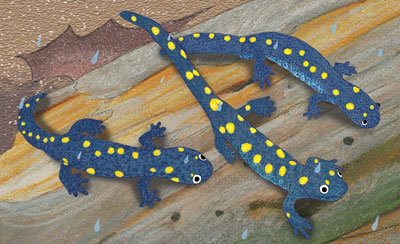
Spotted Salamanders
One amazing animal to get to know better is the salamander! Salamanders are amphibians that have long, slender bodies that are moist and smooth. Salamanders in the world vary greatly from color to size. Some have 2 or 4 legs and others have lungs or gills, or neither and breath through their skin. Others have identifiable spots that are easily seen in the night thanks to their yellow florescent spots along their backs. These spots are mostly identified with the Spotted salamander. Our book Salamander Season chronicles the journey of a colony of Spotted salamanders in the process of breeding within a vernal pool (a temporary pool of water).

Salamander egg and tadpole
For most species of salamanders, humid forests and a water source is crucial for their survival to produce offspring and to keep their skin moist. Salamanders are bred hundreds at a time and are born as tadpoles from their eggs. Over time, their bodies develop and the process of breeding in a vernal pool starts all over again.
Salamanders are generally nocturnal and keep cool during the day under rocks or trees. During the night, they go hunting for food which primarily consists of meat such as worms, slugs, and snails. Besides the main priority of most salamanders depending on humid forests and water as sources for survival, their skin also provides a source for protection. Many species of salamanders can secrete a poisonous liquid from their skin to combat enemies. Salamanders are really interesting creatures, aren’t they?
To learn more about salamanders and how other animals develop, check out these books!:
 Salamander Season One cold, rainy, spring night, a young girl and her scientist father participate in “Salamander Night” to follow hundreds of spotted salamanders as they venture into a vernal pool to mate and lay eggs. Together, the father-child team studies the salamanders through their complete amphibian metamorphosis, culminating in the adult salamanders’ disappearance into the woods in late summer. In easy-to-understand text, the girl relates the tale through her illustrated, photographic journal.
Salamander Season One cold, rainy, spring night, a young girl and her scientist father participate in “Salamander Night” to follow hundreds of spotted salamanders as they venture into a vernal pool to mate and lay eggs. Together, the father-child team studies the salamanders through their complete amphibian metamorphosis, culminating in the adult salamanders’ disappearance into the woods in late summer. In easy-to-understand text, the girl relates the tale through her illustrated, photographic journal. 
Turtles in my Sandbox Imagine finding turtle eggs in your sandbox! When a mother diamondback terrapin lays eggs in a young girl’s sandbox, the girl becomes a “turtle-sitter” to help the babies safely hatch. She raises the teeny hatchlings until they become big enough to fend for themselves in the wild. Then, with the help of experts, she releases them. Along the way, she learns about these unique animals and that she has made an important contribution to their survival. The “For Creative Minds” section includes terrapin fun facts and a turtle habitat craft.
 Turtle Summer This is a companion book to Mary Alice Monroe’s novel,Swimming Lessons, the sequel to The Beach House. In the novel, the readers witness a young mother, Toy, writing a journal for her daughter, Little Lovie. This is the journal Toy is writing. Using original photographs, this scrapbook journal explains the nesting cycle of sea turtles and the natural life along the southeastern coast, including local shore birds, shells, and the sea turtle hospital. Adults and children will enjoy the images, information and the journal with or without the novel.
Turtle Summer This is a companion book to Mary Alice Monroe’s novel,Swimming Lessons, the sequel to The Beach House. In the novel, the readers witness a young mother, Toy, writing a journal for her daughter, Little Lovie. This is the journal Toy is writing. Using original photographs, this scrapbook journal explains the nesting cycle of sea turtles and the natural life along the southeastern coast, including local shore birds, shells, and the sea turtle hospital. Adults and children will enjoy the images, information and the journal with or without the novel.


Tip off is here and we are ready to choose teams. On one side we find out which fictional character reins supreme, and on the other side great beasts go head-to-head. Prizes are on the line so choose wisely.

You guessed it, It is time for March Madness! We are mad about books at Arbordale and this year we have our own March Madness contest for you. Choose your favorites on the bracket downloaded from our website and submit your choices by March 25th. This tournament isn’t winner take all; the top four scorers will win a prize.
Visit our March Madness page for all the dates, details and to download your bracket!
And don’t forget, one of the newest members of the Arbordale team, Midnight Madness at the Zoo is a great March read!
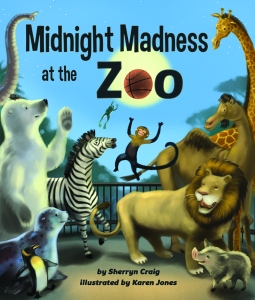


By: Arbordale Publishing,
on 2/15/2016
Blog:
(
Login to Add to MyJacketFlap)
JacketFlap tags:
Add a tag
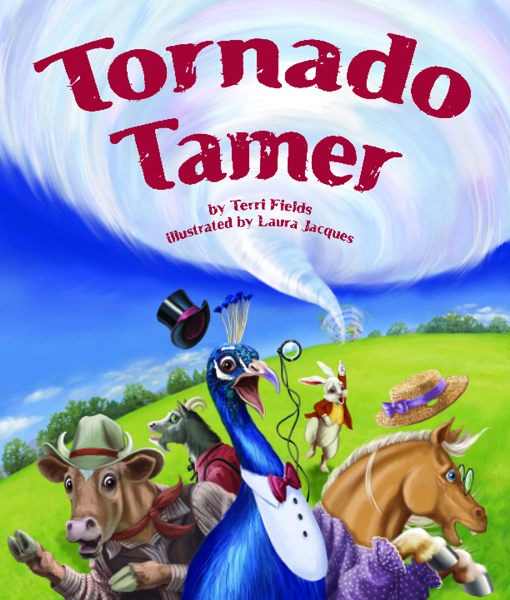
The truth has a funny way of coming out! In Terri Fields newest picture book Tornado Tamer, a town plagued by tornadoes hires a tornado tamer to build a cover. The weasel builds a cover, but tells the town that only those special and smart enough will be able to see the cover.
If this story sounds familiar, it is. This adaptation of The Emperor’s New Clothes incorporates tornado facts throughout the book and in the “For Creative Minds” section readers can even make their own tornado!
After researching tornadoes author Terri Fields wanted to share some amazing stories with readers:
 The most extreme tornado winds can get up to 300 miles per hour. These fierce winds can destroy homes and buildings. They can uproot trees and plants. They can lift cars, trucks, and even trains. The wreckage tornadoes leave can be more than a mile wide and up to 50 miles long. No doubt, these wicked winds can create tremendous damage, and yet, there have been some amazing stories of what tornadoes did not destroy. To celebrate the release of the new picture book The Tornado Tamer, by Terri Fields, here are just a few of those stories.
The most extreme tornado winds can get up to 300 miles per hour. These fierce winds can destroy homes and buildings. They can uproot trees and plants. They can lift cars, trucks, and even trains. The wreckage tornadoes leave can be more than a mile wide and up to 50 miles long. No doubt, these wicked winds can create tremendous damage, and yet, there have been some amazing stories of what tornadoes did not destroy. To celebrate the release of the new picture book The Tornado Tamer, by Terri Fields, here are just a few of those stories.
- In Charlotte, North Carolina, strong tornado winds tore three young children from their beds. Their house was knocked to the ground and torn apart. Amazingly though, when the three kids were found tossed far from their home, they had only a few minor cuts.
- Tornado winds in Minnesota ripped off the roof of a house and sent it flying. Those same brutal winds caused heavy furniture to overturn. However, the homeowners found the cat bowls had not moved at all, and the water and the food in them were fine too.
- In Kansas, a tornado plucked the feathers right off a flock of chickens.
- An Alabama man was hurt in a tornado so badly that he was unconscious for three days. When he finally awakened, he remembered that he’d left his pants in his closet with $600 in a pant pocket. Since the house had been destroyed, he had little hope of seeing the pants or the money again. But his son found the pants stuck in a nearby fence, and all the money was still in the pocket!
- In Oklahoma City, a woman went out to a parking lot to see that most of the cars had been smashed into each other, but to her delighted surprise, her car was fine. It was even still in the same parking spot she’d left it. There was just one difference; the tornado had stripped her car of its paint.
- In Huntsville, Alabama, a woman was trying to get into her house, but the tornado struck before she could open the door. She pushed herself against the door and hoped for the best. After the tornado passed, she peeled herself from the door, only to see that her house had been destroyed, but the front door was still standing.
Get your own copy of Tornado Tamer, enter to win our Goodreads giveaway!


By: Arbordale Publishing,
on 2/14/2016
Blog:
(
Login to Add to MyJacketFlap)
JacketFlap tags:
Linda Stanek,
Once Upon an Elephant,
picture book,
children's book,
elephants,
Book Launches,
book launch,
nonfiction book,
shennen bersani,
Arbordale Posts,
Arbordale News,
elephant book,
Add a tag

On the African savanna Elephants are gentle giants that have an incredible impact on the ecosystem. Once Upon an Elephant by Linda Stanek debuts this week, and the amazing facts about elephants are sure to make any child want to know more about how they can help this important animal.
Learn how this book came to life from the author Linda Stanek:
 It’s funny how researching one thing can lead to something else. While working on a book for the Columbus Zoo and Aquarium about their baby elephant, Beco, elephant expert Harry Peachey mentioned the words “keystone animal” to me. Keystone animal? I was embarrassed to admit that I didn’t know what that was. When he explained that these are animals so critical to maintaining their ecosystems that without them, other species would die, I was shocked. This was important stuff! How did I not know about it? If didn’t know about this, then who else didn’t know as well? And what an important concept to share those who would inherit this fragile Earth—our children.
It’s funny how researching one thing can lead to something else. While working on a book for the Columbus Zoo and Aquarium about their baby elephant, Beco, elephant expert Harry Peachey mentioned the words “keystone animal” to me. Keystone animal? I was embarrassed to admit that I didn’t know what that was. When he explained that these are animals so critical to maintaining their ecosystems that without them, other species would die, I was shocked. This was important stuff! How did I not know about it? If didn’t know about this, then who else didn’t know as well? And what an important concept to share those who would inherit this fragile Earth—our children.
That was the beginning of Once Upon an Elephant. What if, I thought, elephants were only “Once Upon a Time?” It was a heartbreaking thought. And if they did, indeed, become extinct, what else might become once upon a time as well?
After writing this manuscript, I shared it with my friend, Harry and got his thumbs-up. Then, I sent it to a handful of publishers. Within two weeks (which is quicker than lightning, in publishing-time) Arbordale made me an offer. And even more quickly, I accepted.
Two days later, I got an offer for Once Upon an Elephant from another publisher. “Drat!” my sister said. “You could have an auction!”
But I was satisfied. I knew that Arbordale produces beautiful books. And, I  appreciate that they place their books not only in bookstores, but in museum, aquarium, and zoo gift shops as well—where interested readers are likely to be found. When they signed Shennen Bersani to illustrate it, I was even happier. She crafted the amazing images to make this book complete, allowing me to share with children the concept of the keystone animal, and my love of elephants.
appreciate that they place their books not only in bookstores, but in museum, aquarium, and zoo gift shops as well—where interested readers are likely to be found. When they signed Shennen Bersani to illustrate it, I was even happier. She crafted the amazing images to make this book complete, allowing me to share with children the concept of the keystone animal, and my love of elephants.
Learn more! Teaching activities, quizzes and other printable activities are available on the book’s homepage, check it out!
Enter to win your own copy of Once Upon an Elephant on Goodreads!


By: Arbordale Publishing,
on 2/13/2016
Blog:
(
Login to Add to MyJacketFlap)
JacketFlap tags:
Children's Books,
picture books,
author interview,
Book Launches,
Arbordale Posts,
Arbordale News,
basketball book,
math book,
Midnight Madness at the Zoo,
Sherryn Craig,
Add a tag

When there are no people to gawk at the animals living in the zoo, what happens? A basketball game, of course!
In Sherryn Craig’s new picture book Midnight Madness at the Zoo a nightly basketball game breaks out just as everyone is leaving for the night. Beginning with one polar bear, then a game of one-on-one a new player joins until the field builds to a game of ten. Readers learn counting skills and basketball jargon throughout the story.
Sherryn is no stranger to the game of basketball, and spends her free time cheering on her husband’s high school basketball team. Midnight Madness at the Zoo combines the many things that her family holds dear.
 We went behind the book with Sherryn and here is a sample, to read the entire interview visit the book’s homepage.
We went behind the book with Sherryn and here is a sample, to read the entire interview visit the book’s homepage.
What was your incentive to write this particular book?
My oldest son inspired me to write Midnight Madness at the Zoo. It’s what we imagined the animals do when everyone else goes home for the day. While several people cautioned me about writing a book in rhyme, my kids tend to enjoy those books the best. e rhythm and rhyme helps them to remember the story and they “read” the book out loud as I do. It was important to me that my boys enjoy the story, and they’re the audience that I know the best and that I love the most.
What is most rewarding about writing children’s books?
As a working mom, the most challenging thing I find about writing is actually sitting down and doing it. By the time I get my little ones in bed and finish the chores for the day, it’s late, I’m tired, and I want to go to bed, because the next day is only a few hours away. But to do something, and to do it really well, you have to do it a lot. To improve in writing, just like in sports, you have to practice.
Taking a risk and being prepared to fail is another important lesson – in writing, in sports,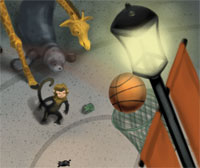 in life. You’re not going to win every game. So too, everyone is not going to like the story you write. There’s going to be disappointment, and you just have to fight through that, keep putting yourself out there, and try, try again. That’s all we can do. It’s tempting to get wrapped up in all the no’s, but equally important, perhaps even greater than that rejection, is the realization that it only takes one yes.
in life. You’re not going to win every game. So too, everyone is not going to like the story you write. There’s going to be disappointment, and you just have to fight through that, keep putting yourself out there, and try, try again. That’s all we can do. It’s tempting to get wrapped up in all the no’s, but equally important, perhaps even greater than that rejection, is the realization that it only takes one yes.
The greatest reward is certainly getting to tell a story and finding people, like Arbordale, that believe in that story – who, too, are willing to take a risk on someone and something unknown.
Enter to win your own copy of Midnight Madness at the Zoo on Goodreads!


By: Arbordale Publishing,
on 2/12/2016
Blog:
(
Login to Add to MyJacketFlap)
JacketFlap tags:
Children's Books,
nonfiction,
Book Launches,
Mammals,
educational books,
teaching activities,
Arbordale Posts,
Compare and Contrast Book,
Katharine Hall,
Arbordale News,
Kevin Kurtz,
Sharks and Dolphins,
Add a tag


It’s nonfiction Friday and we are featuring two new books that launched this week. Mammals by Katharine Hall and Sharks and Dolphins by Kevin Kurtz!
Written for young nature enthusiasts the Compare and Contrast Book series takes children into the wild with beautiful photographs and simple text to explain complicated concepts.
 Author Katharine Hall began the series with Polar Bears and Penguins showing children that these animals live at opposite ends of the earth. Then she dove into plant life with Trees and flew to the sky with Clouds. Hall set her sights on slithering and slimy creatures comparing the similarities and differences in Amphibians and Reptiles even introducing the field of herpetology to young readers. This week Mammals joins the lineup comparing animals that live on land and in the sea along with two-legged and four-legged animals.
Author Katharine Hall began the series with Polar Bears and Penguins showing children that these animals live at opposite ends of the earth. Then she dove into plant life with Trees and flew to the sky with Clouds. Hall set her sights on slithering and slimy creatures comparing the similarities and differences in Amphibians and Reptiles even introducing the field of herpetology to young readers. This week Mammals joins the lineup comparing animals that live on land and in the sea along with two-legged and four-legged animals.
 Teaming up with Hall, aquatic educator and expert Kevin Kurtz joined the Compare and Contrast Book series releasing Sharks and Dolphins this week. The no-nonsense facts will help young readers understand that although both of these animals live in the salty ocean each has a different way of life.
Teaming up with Hall, aquatic educator and expert Kevin Kurtz joined the Compare and Contrast Book series releasing Sharks and Dolphins this week. The no-nonsense facts will help young readers understand that although both of these animals live in the salty ocean each has a different way of life.
Extend the learning with great activities in our Teaching Activities Guide. This, along with author interviews and more information about the series is available on each book’s homepage. Visit Mammals or Sharks and Dolphins to learn more.

Win your very own copy of each of these books on Goodreads!


By: Arbordale Publishing,
on 2/12/2016
Blog:
(
Login to Add to MyJacketFlap)
JacketFlap tags:
Arbordale Posts,
Arbordale News,
Cash Kat,
money books,
volunteering books,
Children's Books,
picture books,
counting books,
Book Launches,
Linda Joy Singleton,
educational books,
Christina Wald,
math books,
Add a tag

After reading Linda Joy Singleton’s newest picture book Cash Kat we think she is the coolest grandma in the world! This book was inspired by a game with her grandson where he learned to count money by helping out and then buying rewards with the money he earned.
Cash Kat starts out with Gram Hatter and Kat setting off on a treasure hunt. This crafty grandma folds many hats as the pair encounter new challenges volunteering for the park clean up day. Throughout the day Kat has her eye on the ultimate prize, ice cream; but in the end she must choose between her favorite treat or donating her findings to the park.
In celebration of the launch of Cash Kat here is a pattern to make your own paper hat and set out on your own adventure!
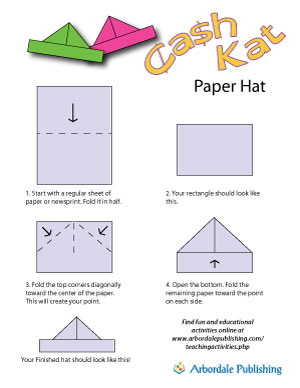
Meet the author and illustrator of Cash Kat by visiting the book’s homepage. Where there are many more activities including the “For Creative Minds” section.
Enter to win your very own copy of Cash Kat in our Goodreads giveaway!


By: Arbordale Publishing,
on 2/11/2016
Blog:
(
Login to Add to MyJacketFlap)
JacketFlap tags:
animal signs,
Been There Done That,
Arbordale Posts,
Arbordale News,
Jen Funk Weber,
tracking animals,
Children's Books,
picture books,
Book Launches,
book launch,
informational books,
Add a tag

Have you ever walked through the woods and wanted so badly to see animals only to be disappointed that none were around? That is the premise of Jen Funk Weber’s new children’s book Been There, Done That: Reading Animal Signs.
In the book, Cole is visiting his friend Helena and he really wants to see wild animals. They take a hike and Helena shows Cole signs that animals are around even they are not standing in front of him.
This book shows that there is more to spotting signs of wildlife than seeing paw prints across the hood of your car or the imprint of little bird feet in the sand. In fact, tracks are a very little part of spotting signs of wildlife.
Author Jen Funk Weber has a lot of practice tracking animals. Although the animals in Been There, Done That are residents of the Pacific northwest and up through Alaska, Jen has tracked animals around the world. Read this wonderful account of leopard tracking in Africa!
 To celebrate the launch of Jen’s new book we asked her a few questions about writing and tracking animal signs.
To celebrate the launch of Jen’s new book we asked her a few questions about writing and tracking animal signs.
What was your incentive to write this particular book?
Having worked as a natural history guide in Alaska, I know that people want to see exciting things when they take the time and make the e ort to get out in nature, but that’s not the way nature works. Flowers and wild animals don’t perform on command. In fact, most wild animals prefer to avoid humans.
But things are happening all the time in nature, and there are clues all around that can help us “see” what’s happening, even if we don’t actually witness it. It’s fun looking for these clues and trying to figure out what happened. It’s like snooping on neighbors, except the animals don’t seem to mind. If we spend enough time out there, we might get lucky and see some of those really exciting, once-in-a- lifetime events.
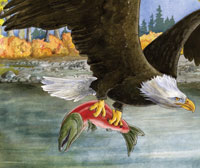 And, of course, hiking, searching for animal signs, and watching wildlife are some of my favorite things to do, but you guessed that, right?
And, of course, hiking, searching for animal signs, and watching wildlife are some of my favorite things to do, but you guessed that, right?
When are you most creative?
Around 4 a.m. No, really. I love getting up in the wee hours to write. Picture this: It’s zero degrees outside, snowy, and dark. But it’s warm enough inside—at least it is at my desk, two feet from the heater. e sky is full of stars and maybe northern lights. It won’t get light for hours. I turn on colored lights that rim the ceiling and light fragrant candles on the windowsills. I make a pot of jasmine tea. I sit. It’s quiet and still. I imagine. I write.
Okay, it’s not always that way, but sometimes it is.
As for what sparks my creativity; that would be new ideas and experiences. It can be something as small as a headline or a fascinating fact, or it can be a trip to someplace new, or it can be thinking about something in a new way, i.e., a new perspective. Every new thought or experience gets processed into past thoughts and experiences, and this synthesis triggers the creative process.
For instance, while converting feet to meters, I wondered why the US has never really converted to the metric system. When I was a kid, we were told we needed to switch because the whole country would soon switch.
 I began to wonder why time has never been converted to the metric system, even where the metric system is used. Instead of 24 hours in a day, we could have 10 or 100 some-other-unit-of- measure.
I began to wonder why time has never been converted to the metric system, even where the metric system is used. Instead of 24 hours in a day, we could have 10 or 100 some-other-unit-of- measure.
Now I’m motivated to do some research about metrics. An old idea—converting to the metric system—leads to creative thinking when applied in a new way—to time.
Read our full interview with Jen on the Been There, Done That homepage!
Also enter to win our Goodreads giveaway that opens on February 15th!


By: Arbordale Publishing,
on 2/10/2016
Blog:
(
Login to Add to MyJacketFlap)
JacketFlap tags:
Children's Books,
picture books,
counting books,
Book Launches,
book launch,
educational books,
animal books,
spring books,
science for kids,
basketball books,
animal signs,
Arbordale Posts,
Arbordale News,
elephant book,
tornado book,
Add a tag
It’s that time of year! Seven new books from Arbordale make their way into the hands of young readers across the country. This week we will be highlighting each book and their creators on our blog.
Before you learn about the inspiration for each of these books get to know the spring line up and pick your must have title for 2016!
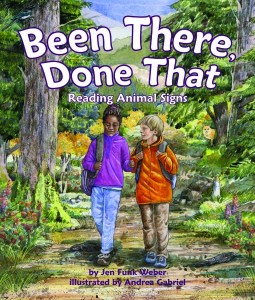 Been There, Done That: Reading Animal Signs
Been There, Done That: Reading Animal Signs
by Jen Funk Weber
illustrated by Andrea Gabriel
Spotting wildlife is a thrill, but it’s not easy. When Cole comes to visit his friend Helena, he can’t wait to see all the wildlife the forest has to offer—and disappointed when all he sees are a few birds. Together the kids set out on a hike and encounter plenty of animal signs along the way. Through observation and her knowledge of animal behavior, Helena helps Cole learn what each of the signs means: something had been there; something had done that.
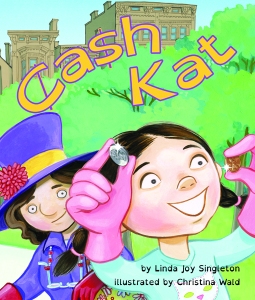 Cash Kat
Cash Kat
by Linda Joy Singleton
illustrated by Christina Wald
Gram Hatter and Kat set off on an adventure. Gram quickly folds up a pirate hat and places it on Kat’s head and they begin their mission to help clean up the city park. Volunteering turns into a treasure hunt as Kat finds pennies, nickels, dimes, quarters and even a dollar. With each discovery Kat gets a new hat and Gram Hatter teaches Kat how to count her coins as they pick up litter at the park. When Kat adds up her money, there’s enough for ice cream. Or should she donate the money to support the park instead?
 Mammals
Mammals
by Katharine Hall
All mammals share certain characteristics that set them apart from animal classes. But some mammals live on land and other mammals spend their lives in water—each is adapted to its environment. Land mammals breathe oxygen through nostrils but some marine mammals breathe through blowholes. Compare and contrast mammals that live on land to those that live in the water.
 Midnight Madness at the Zoo
Midnight Madness at the Zoo
by Sherryn Craig
illustrated by Karen Jones
The bustle of the crowd is waning and the zoo is quieting for the night. The polar bear picks up the ball and dribbles onto the court; the nightly game begins. A frog jumps up to play one-on-one and then a penguin waddles in to join the team. Count along as the game grows with the addition of each new animal and the field of players builds to ten. Three zebras serve as referees and keep the clock, because this game must be over before the zookeeper makes her rounds.
 Once Upon an Elephant
Once Upon an Elephant
by Linda Stanek
illustrated by Shennen Bersani
From stopping wildfires to planting seeds, one animal is the true superhero that keeps the African savanna in balance. Elephants dig to find salt for animals to lick, their deep footprints collect water for everyone to drink, and they eat young trees to keep the forest from overtaking the grasslands. In every season, the elephants are there to protect the savanna and its residents – but what would happen if the elephants were only “once upon a time”? Read along to discover the important role this keystone species plays in the savanna and explore what would happen if the elephants vanished.
 Sharks and Dolphins
Sharks and Dolphins
by Kevin Kurtz
Sharks and dolphins both have torpedo-shaped bodies with fins on their backs. They slice through the water to grab their prey with sharp teeth. But despite their similarities, sharks and dolphins belong to different animal classes: one is a fish and gets oxygen from the water and the other is a mammal and gets oxygen from the air. Marine educator Kevin Kurtz guides early readers to compare and contrast these ocean predators through stunning photographs and simple, nonfiction text.
 Tornado Tamer
Tornado Tamer
by Terri Fields
illustrated by Laura Jacques
In this adaptation of The Emperor’s New Clothes, Mayor Peacock declares he will hire a tornado tamer to protect the town. After a long search, Travis arrives to fill the position and this weasel has a plan. He will build a very special, transparent cover to protect the town. Travis’ magical cover is so transparent that only those smart enough and special enough can even see it. Mouse is doubtful, but his questions are brushed off. Months later, the cover has been hung and Travis has been paid a hefty sum, but a tornado is in the distance and the town is in its path. Will the magic cover protect the town?
Find out more about our newest titles at Arbordalepublishing.com!


By: Arbordale Publishing,
on 1/8/2016
Blog:
(
Login to Add to MyJacketFlap)
JacketFlap tags:
Children's Books,
media,
headlines,
glaciers,
scientific method,
glaciers melting,
Science and World News,
Arbordale Posts,
explore science,
inquiry learning,
science bias,
Add a tag
“Scientists confirm that East Antarctica’s biggest glacier is melting from below” – Washington Post
“Alaska’s Glaciers Melt Faster as Climate Change Speeds Up” – Climate Change News
“NW’s melting glaciers, in a word: ‘DISASTROUS’ – Seattle Times
“Melting glaciers blamed for subtle slowing of Earth’s rotation” – Yahoo News
“Earth May Spin Faster as Glaciers Melt” – Discovery News
“How the world’s newest glacier is forming on Washington’s Mouth St. Helens…site of the deadliest volcanic eruption in US history” – Daily Mail. Com

With so many conflicting studies and headlines being announced about glaciers and climate change, how do you know what to believe?
When we learn about the scientific process, the first steps involve asking questions to form a hypothesis and then testing that hypothesis. Some studies are very narrowly focused others are broader, and the results make assumptions based on the findings of the experiment. Because the scientific method is always questioning, the curious must repeatedly confirm that data is accurate and without bias to take the findings as fact.
But…what happens when a scientist has a strong bias toward the outcome? Errors and biases in studies are caught all the time. One of the more famous biased studies in history was Crania Americana by Samuel George Morton. Read more about it here.
Media bias is another reason so many conflicting headlines are reported each day. When a reporter has a story to write they may interview a scientist who has done a study that closely aligns to their angle, or focus on one fact in a much larger study. This is why it is so important to dig deeper into research to find the truth and even conduct studies of your own.
So… Are the glaciers melting? The answer is yes, some glaciers have greatly reduced in size. Here is a time-lapse video of a glacier melting at a rapid pace.
Are glaciers growing? Yes, there is a new glacier growing into the crater of Mount St. Helens.
Read The Glaciers are Melting! and get the facts that may help you come to your own conclusion!
 Chicken Little may have thought the sky was falling but Peter Pika is sure the glaciers are melting and is off to talk to the Mountain Monarch about it. Joined along the way by friends Tammy Ptarmigan, Sally Squirrel, Mandy Marmot, and Harry Hare, they all wonder what will happen to them if the glaciers melt. Where will they live, how will they survive? When Wiley Wolverine tries to trick them, can the Mountain Monarch save them? More importantly, can the Mountain Monarch stop the glaciers from melting?
Chicken Little may have thought the sky was falling but Peter Pika is sure the glaciers are melting and is off to talk to the Mountain Monarch about it. Joined along the way by friends Tammy Ptarmigan, Sally Squirrel, Mandy Marmot, and Harry Hare, they all wonder what will happen to them if the glaciers melt. Where will they live, how will they survive? When Wiley Wolverine tries to trick them, can the Mountain Monarch save them? More importantly, can the Mountain Monarch stop the glaciers from melting?


By: Arbordale Publishing,
on 12/7/2015
Blog:
(
Login to Add to MyJacketFlap)
JacketFlap tags:
Children's Books,
penguins,
educational books,
staying warm,
emperor penguin,
Science and World News,
science news,
Arbordale Posts,
penguin kids books,
Add a tag
 When you live in Antarctica and wear a tuxedo it is a group activity to keep warm on a cold winter day. Scientists have documented that emperor penguins form huddles to stay warm in the frigid temperatures of this habitat.
When you live in Antarctica and wear a tuxedo it is a group activity to keep warm on a cold winter day. Scientists have documented that emperor penguins form huddles to stay warm in the frigid temperatures of this habitat.
The penguins have a sophisticated system of rotation to make sure that no one gets too cold, but by studying the Pointe Géologie Archipelago colony researchers have found that huddles are sometimes very short-lived activities for the birds.
When the cold sets in or the wind kicks up, the birds seek out a huddle. The temperatures in the huddle can become much higher than the birds comfort level and researchers first believed that the huddles would break up from the center, but after spending years observing these animals they found that one single bird leaving from the outside can break up a huddle.
While scientists may have originally thought huddles were a simple process in the penguin lifestyle, there is much more that can be learned from the way that these birds socially regulate their temperatures.
Read the article: A Single Penguin can break up a huddle!
To learn more about penguins here are some great stories to share with your little ones:
 The Penguin Lady
The Penguin Lady
by Carol A Cole, illus. by Sherry Rogers
Penelope Parker lives with penguins! Short ones, tall ones; young and old—the penguins are from all over the Southern Hemisphere including some that live near the equator! Do the penguin antics prove too much for her to handle? Children count and then compare and contrast the different penguin species as they learn geography.
 Polar Bears and Penguins: A Compare and Contrast Book
Polar Bears and Penguins: A Compare and Contrast Book
by Katharine Hall
Polar bears and penguins may like cold weather but they live at opposite ends of the Earth. What do these animals have in common and how are they different? You might see them near each other at a zoo but they would never be found in the same habitats in the wild. Compare and contrast these polar animals through stunning photographs.


By: Arbordale Publishing,
on 10/29/2015
Blog:
(
Login to Add to MyJacketFlap)
JacketFlap tags:
for creative minds,
Halloween,
vampire squid,
owl,
Trick or treat,
rhino,
Bats,
flamingo,
orca,
sharks,
animal facts,
Special Days,
cassowary,
Add a tag
Nature has a way of being cruel and being kind, here are a few fun facts where you can decide, if it is a trick or treat!
-Bats are the only mammals that can fly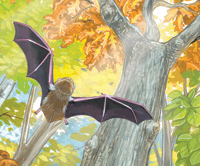
-A flamingo can only eat when its head is upside down.
-If a kangaroo’s tail is lifted off the ground it is unable to hop. They use their tail for balance.
-A baby shark is ready to go fast when it is born, so that the mother shark doesn’t eat it.
-An owl can’t move its eyes, but it can turn its head 270 degrees.
 -The cassowary is a beautiful bird and is predominately a vegetarian, but it can tear holes in flesh like Swiss cheese.
-The cassowary is a beautiful bird and is predominately a vegetarian, but it can tear holes in flesh like Swiss cheese.
-The orca has no natural predator in the sea and they hunt in groups just like wolves do on land.
-Rhinos amble through the African Savanna and thickets of dense plants filled with ticks that attach to the rhinos and make them itch! The tick bird rides along while eating the tasty treat!
-The vampire squid is a creepy ocean creature that squirts glowing goo from its arms.
Find these facts and many more in Arbordale’s For Creative Minds sections! Take a look while you are eating your trick or treat loot!


By: Arbordale Publishing,
on 10/23/2015
Blog:
(
Login to Add to MyJacketFlap)
JacketFlap tags:
Arbordale Posts,
Add a tag
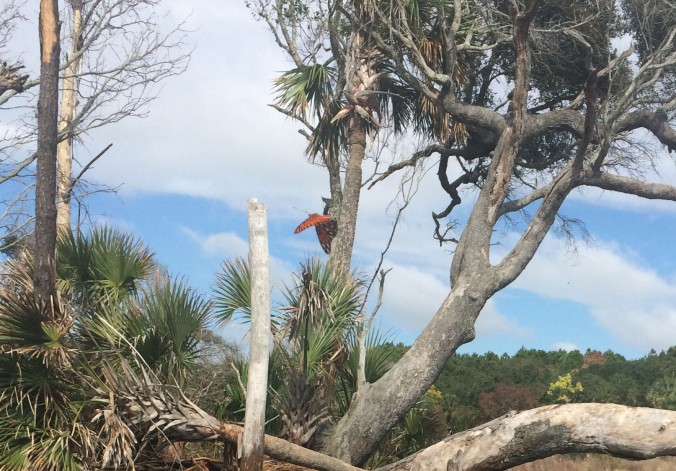 Each fall and spring we may stay put in our houses, but there are many animals on the move to their seasonal home. Although many animals migrate, one of the most mystical events is the monarch’s journey to Mexico.
Each fall and spring we may stay put in our houses, but there are many animals on the move to their seasonal home. Although many animals migrate, one of the most mystical events is the monarch’s journey to Mexico.
Some of the tiny insects will fly about 3,000 miles before they reach their final destination. Many butterflies will be reaching their destination very soon, but many are still on the journey and it is a sight to see.
If you live in the Southeast head outside to catch the end of the migration season. Watch the butterflies fluttering their way south one after another, sometimes they appear to be chasing each other and playing. Others are on a mission to make it to a warmer climate!
If you want to learn more about butterflies and migration here are a few books that may peak your interest!
A Butterfly Called Hope
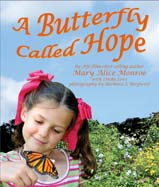 The colorful flowers in Mama’s garden reveal a strange-looking creature. “What is it? Does it sting, does it bite?” Join in this photographic journey as the young girl and her mother care for the caterpillar. Watch as it transforms into a chrysalis and then emerges as a beautiful monarch butterfly. How can the young girl “claim” the butterfly as her own but still let it go free?
The colorful flowers in Mama’s garden reveal a strange-looking creature. “What is it? Does it sting, does it bite?” Join in this photographic journey as the young girl and her mother care for the caterpillar. Watch as it transforms into a chrysalis and then emerges as a beautiful monarch butterfly. How can the young girl “claim” the butterfly as her own but still let it go free?
On the Move
 Imagine seeing hundreds of the same type of animal gathered at the same place and at the same time! Right here in North America many animals gather in huge numbers and can be seen at predictable times and locations. Not all migrations are tied to seasonal food changes—some are tied to life cycles and the need to gather in huge numbers. Certain birds, reptiles, mammals, amphibians, fish, and even insects migrate during spring, summer, fall, or winter. Travel along with them as you learn about what puts these animals On the Move.
Imagine seeing hundreds of the same type of animal gathered at the same place and at the same time! Right here in North America many animals gather in huge numbers and can be seen at predictable times and locations. Not all migrations are tied to seasonal food changes—some are tied to life cycles and the need to gather in huge numbers. Certain birds, reptiles, mammals, amphibians, fish, and even insects migrate during spring, summer, fall, or winter. Travel along with them as you learn about what puts these animals On the Move.
Ten For Me
 Two friends take off on a butterfly hunt, only to find themselves tangled in a mathematics net! Written in rhyme, award-winning author Barbara Mariconda takes you along as the narrator Rose and her friend Ed race to see who can catch the most butterflies on this addition adventure. “How many in all? Let’s add them again!” shout the butterfly hunters. Who will win? Ten for Me makes math fun, easy, and entertaining, while adding a touch of the natural world into cross-curricular education.
Two friends take off on a butterfly hunt, only to find themselves tangled in a mathematics net! Written in rhyme, award-winning author Barbara Mariconda takes you along as the narrator Rose and her friend Ed race to see who can catch the most butterflies on this addition adventure. “How many in all? Let’s add them again!” shout the butterfly hunters. Who will win? Ten for Me makes math fun, easy, and entertaining, while adding a touch of the natural world into cross-curricular education.


By: Arbordale Publishing,
on 9/29/2015
Blog:
(
Login to Add to MyJacketFlap)
JacketFlap tags:
Sounds of the Savanna,
book recomendation,
giraffe noise,
The Giraffe Who Was Afraid of Heights,
kids books,
Educational,
giraffe,
Teaching moments,
Featured Books,
science news,
Add a tag
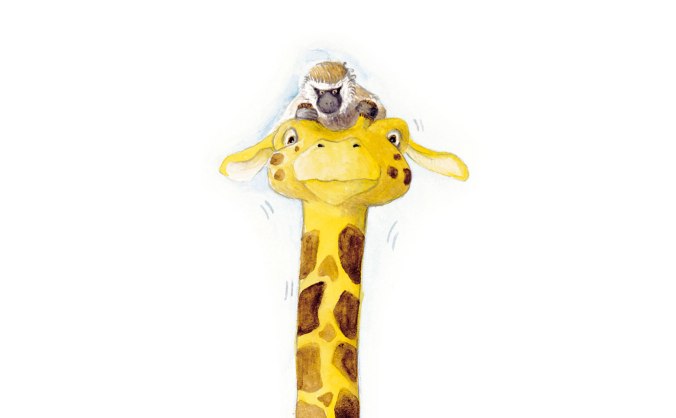
Did you know that giraffes, often a very quiet animal, hum in their sleep late at night? Zookeepers involved in the study were even surprised that researchers picked up a low humming noise from their giraffes.
Researchers spent hundreds of hours recording sounds in the giraffe’s enclosures and in each zoo at least one giraffe was separated from the herd.
Although the sound recordings tell us that giraffes do have more vocalization than the grunts and sneezes that keepers hear during the day, now scientists may go further to understand if this is a communication method or if it is involuntary like snoring or talking in your sleep.
Hear the giraffe’s hum and learn more about the study here.
Do you want to learn more about giraffes, or animal sounds? Here are two Arbordale books that would be a great start on the topic!
The Giraffe Who was Afraid of Heights
 Imagine if the one thing that keeps you safe is what you fear the most. This enchanting story tells of a giraffe who suffers from the fear of heights. His parents worry about his safety and send him to the village doctor for treatment. Along the way he befriends a monkey who is afraid of climbing trees and a hippo who is afraid of water. A life-threatening event causes the three friends to face and overcome each of their fears. The “For Creative Minds” section includes fun facts and animal adaptation information, a match-the-feet game and a mix-n-match activity.
Imagine if the one thing that keeps you safe is what you fear the most. This enchanting story tells of a giraffe who suffers from the fear of heights. His parents worry about his safety and send him to the village doctor for treatment. Along the way he befriends a monkey who is afraid of climbing trees and a hippo who is afraid of water. A life-threatening event causes the three friends to face and overcome each of their fears. The “For Creative Minds” section includes fun facts and animal adaptation information, a match-the-feet game and a mix-n-match activity.
Sounds of the Savanna
 From the first light of dawn until the sun sets at night, the savanna is alive with noise. A lion roars in the early morning, a young baboon shrieks to warn others of danger at noon, and a young mouse squeals at dusk. What are the animals saying and why? Animals communicate in many ways; explore the thriving African savanna as its inhabitants “talk” to one another throughout the course of a day.
From the first light of dawn until the sun sets at night, the savanna is alive with noise. A lion roars in the early morning, a young baboon shrieks to warn others of danger at noon, and a young mouse squeals at dusk. What are the animals saying and why? Animals communicate in many ways; explore the thriving African savanna as its inhabitants “talk” to one another throughout the course of a day.
And…Look forward to next year when we see what really happens at night in the zoo! Midnight Madness at the Zoo coming February 2016!
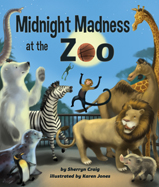


View Next 25 Posts
 As the sun begins to set, arctic animals scurry to prepare for six months of darkness and cold. Tuktuk the collared lemming is almost ready for the long winter night – all he needs is warm fur to line his nest. When one furry kamik (boot) slips off an Inuit driver’s sled, Tuktuk is in luck! But as he drags it home, Putak the polar bear, Aput the arctic fox, and Masak the caribou eye this little lemming’s prize and want it for their own. Can Tuktuk outwit the other animals and convince them that one furry kamik is no good for anyone bigger than a lemming?
As the sun begins to set, arctic animals scurry to prepare for six months of darkness and cold. Tuktuk the collared lemming is almost ready for the long winter night – all he needs is warm fur to line his nest. When one furry kamik (boot) slips off an Inuit driver’s sled, Tuktuk is in luck! But as he drags it home, Putak the polar bear, Aput the arctic fox, and Masak the caribou eye this little lemming’s prize and want it for their own. Can Tuktuk outwit the other animals and convince them that one furry kamik is no good for anyone bigger than a lemming? Little Woolly leaves her mother behind as she chases a toad down to the river. When the glacial ice breaks, she is swept away in the rumbling, rolling water. Now alone, the mammoth calf struggles to survive. She must sneak past cave lions, bears, saber-toothed cats and humans. Exhausted and afraid, she must even hide from stormy weather as she fights her way back to her herd. How can she find them? Will she ever get back?
Little Woolly leaves her mother behind as she chases a toad down to the river. When the glacial ice breaks, she is swept away in the rumbling, rolling water. Now alone, the mammoth calf struggles to survive. She must sneak past cave lions, bears, saber-toothed cats and humans. Exhausted and afraid, she must even hide from stormy weather as she fights her way back to her herd. How can she find them? Will she ever get back? Dangerous animals from all over the world gather for the Most Dangerous Animal of All Contest. Snakes, spiders, sharks . . . who will the winner be? Deadly poison, huge teeth, razor -sharp horns, and fearsome feet are just a few of the ways that animals kill. Predators mean to kill. Prey simply defend themselves. And yet, the unexpected most deadly-animal doesn’t mean to harm at all!
Dangerous animals from all over the world gather for the Most Dangerous Animal of All Contest. Snakes, spiders, sharks . . . who will the winner be? Deadly poison, huge teeth, razor -sharp horns, and fearsome feet are just a few of the ways that animals kill. Predators mean to kill. Prey simply defend themselves. And yet, the unexpected most deadly-animal doesn’t mean to harm at all! Someone stole a cake from the cake contest—who could it be? Twelve animal bakers are potential suspects but Detective Duck uses his deductive reasoning skills to “quack” the case. After all, the thief left hairs behind so the thief wasn’t a bird. Follow along as he subtracts each suspect one at a time to reveal just who the culprit was. This clever story will have children of all ages giggling at the puns and the play on words. Key phrases for educators: subtraction, deductive reasoning, animal adaptations, puns/play on words.
Someone stole a cake from the cake contest—who could it be? Twelve animal bakers are potential suspects but Detective Duck uses his deductive reasoning skills to “quack” the case. After all, the thief left hairs behind so the thief wasn’t a bird. Follow along as he subtracts each suspect one at a time to reveal just who the culprit was. This clever story will have children of all ages giggling at the puns and the play on words. Key phrases for educators: subtraction, deductive reasoning, animal adaptations, puns/play on words. Imaginations will soar from the forest floor, up through the canopy and back down again, following the circle of life. The jungle comes alive as children learn about the wide variety of creatures lurking in the lush Amazon rainforest in this clever adaptation of the song “The Green Grass Grew All Around.” Search each page to find unique rainforest bugs and butterflies hiding in the illustrations. Delve even deeper into the jungle using sidebars and the “For Creative Minds” educational section, both filled with fun facts about the plants and animals, how they live in the rainforest and the products we use that come from the rainforest.
Imaginations will soar from the forest floor, up through the canopy and back down again, following the circle of life. The jungle comes alive as children learn about the wide variety of creatures lurking in the lush Amazon rainforest in this clever adaptation of the song “The Green Grass Grew All Around.” Search each page to find unique rainforest bugs and butterflies hiding in the illustrations. Delve even deeper into the jungle using sidebars and the “For Creative Minds” educational section, both filled with fun facts about the plants and animals, how they live in the rainforest and the products we use that come from the rainforest. From the “crocodile’s dentist,” to the “mongoose spa,” Animal Partners takes a whimsical look at symbiotic relationships of animals large and small. Although many animals live in groups of the same kind, here you will learn how some animals form unique partnerships with different species. After all, don’t we all need a little help from our friends?
From the “crocodile’s dentist,” to the “mongoose spa,” Animal Partners takes a whimsical look at symbiotic relationships of animals large and small. Although many animals live in groups of the same kind, here you will learn how some animals form unique partnerships with different species. After all, don’t we all need a little help from our friends?



 Home in the Cave – by Janet Halfmann, illus. by Shennen Bersani
Home in the Cave – by Janet Halfmann, illus. by Shennen Bersani Little Red Bat – by Carole Gerber, illus. by Christina Wald
Little Red Bat – by Carole Gerber, illus. by Christina Wald Deep in the Desert – by Rhonda Lucas Donald, – by Rhonda Lucas Donald, illus. by Sherry Neidigh
Deep in the Desert – by Rhonda Lucas Donald, – by Rhonda Lucas Donald, illus. by Sherry Neidigh And Coming in spring of 2017 Bat Count: A Citizen Science Story
And Coming in spring of 2017 Bat Count: A Citizen Science Story
 skin that goes from a flying squirrel’s front legs to its back legs and allows it to glide through the air a remarkable adaptation. The fact that katydid ears are on their legs is pretty amazing, too!
skin that goes from a flying squirrel’s front legs to its back legs and allows it to glide through the air a remarkable adaptation. The fact that katydid ears are on their legs is pretty amazing, too!

 captured all 24 species in the wild. Readers can watch Brady Barr comb the jungles, forests, and rivers seeking out reptiles on his Nat Geo Wild show Dangerous Encounters with Brady Barr that airs on Saturdays at 10:30.
captured all 24 species in the wild. Readers can watch Brady Barr comb the jungles, forests, and rivers seeking out reptiles on his Nat Geo Wild show Dangerous Encounters with Brady Barr that airs on Saturdays at 10:30.






 John Adams predicted that fireworks would be part of the Fourth of July celebrations on July 3, 1776 with a letter to Abigail Adams where he said, “I am apt to believe that it will be celebrated by succeeding generations as the great anniversary festival. It ought to be commemorated, as the Day of Deliverance by solemn Acts of Devotion to God Almighty. It ought to be solemnized with Pomp and Parade, with Shews, Games, Sports, Guns, Bells, Bonfires and Illuminations from one End of this Continent to the other from this Time forward forever more.”
John Adams predicted that fireworks would be part of the Fourth of July celebrations on July 3, 1776 with a letter to Abigail Adams where he said, “I am apt to believe that it will be celebrated by succeeding generations as the great anniversary festival. It ought to be commemorated, as the Day of Deliverance by solemn Acts of Devotion to God Almighty. It ought to be solemnized with Pomp and Parade, with Shews, Games, Sports, Guns, Bells, Bonfires and Illuminations from one End of this Continent to the other from this Time forward forever more.” metals. The metals determine the color (copper=blue/green, calcium=red), and the arrangement determines shape (circle, smiley faces, stars).
metals. The metals determine the color (copper=blue/green, calcium=red), and the arrangement determines shape (circle, smiley faces, stars). Conservation of Momentum says that momentum must be the same before and after the explosion. In other words, when the explosion occurs the movement must be balanced.
Conservation of Momentum says that momentum must be the same before and after the explosion. In other words, when the explosion occurs the movement must be balanced. Today is the summer solstice and the official first day of the season for those of us in the northern hemisphere. This year, the full moon known as the strawberry moon or honeymoon lands on the longest day of the year. The events last shared the same date in 1948.
Today is the summer solstice and the official first day of the season for those of us in the northern hemisphere. This year, the full moon known as the strawberry moon or honeymoon lands on the longest day of the year. The events last shared the same date in 1948.



















 eans that the animal is an albino. Some animals are leucistic;
eans that the animal is an albino. Some animals are leucistic;








 The most extreme tornado winds can get up to 300 miles per hour. These fierce winds can destroy homes and buildings. They can uproot trees and plants. They can lift cars, trucks, and even trains. The wreckage tornadoes leave can be more than a mile wide and up to 50 miles long. No doubt, these wicked winds can create tremendous damage, and yet, there have been some amazing stories of what tornadoes did not destroy. To celebrate the release of the new picture book The Tornado Tamer, by Terri Fields, here are just a few of those stories.
The most extreme tornado winds can get up to 300 miles per hour. These fierce winds can destroy homes and buildings. They can uproot trees and plants. They can lift cars, trucks, and even trains. The wreckage tornadoes leave can be more than a mile wide and up to 50 miles long. No doubt, these wicked winds can create tremendous damage, and yet, there have been some amazing stories of what tornadoes did not destroy. To celebrate the release of the new picture book The Tornado Tamer, by Terri Fields, here are just a few of those stories.

 It’s funny how researching one thing can lead to something else. While working on a book for the Columbus Zoo and Aquarium about their baby elephant, Beco, elephant expert Harry Peachey mentioned the words “keystone animal” to me. Keystone animal? I was embarrassed to admit that I didn’t know what that was. When he explained that these are animals so critical to maintaining their ecosystems that without them, other species would die, I was shocked. This was important stuff! How did I not know about it? If didn’t know about this, then who else didn’t know as well? And what an important concept to share those who would inherit this fragile Earth—our children.
It’s funny how researching one thing can lead to something else. While working on a book for the Columbus Zoo and Aquarium about their baby elephant, Beco, elephant expert Harry Peachey mentioned the words “keystone animal” to me. Keystone animal? I was embarrassed to admit that I didn’t know what that was. When he explained that these are animals so critical to maintaining their ecosystems that without them, other species would die, I was shocked. This was important stuff! How did I not know about it? If didn’t know about this, then who else didn’t know as well? And what an important concept to share those who would inherit this fragile Earth—our children. appreciate that they place their books not only in bookstores, but in museum, aquarium, and zoo gift shops as well—where interested readers are likely to be found. When they signed Shennen Bersani to illustrate it, I was even happier. She crafted the amazing images to make this book complete, allowing me to share with children the concept of the keystone animal, and my love of elephants.
appreciate that they place their books not only in bookstores, but in museum, aquarium, and zoo gift shops as well—where interested readers are likely to be found. When they signed Shennen Bersani to illustrate it, I was even happier. She crafted the amazing images to make this book complete, allowing me to share with children the concept of the keystone animal, and my love of elephants.

 We went behind the book with Sherryn and here is a sample, to read the entire interview visit the
We went behind the book with Sherryn and here is a sample, to read the entire interview visit the  in life. You’re not going to win every game. So too, everyone is not going to like the story you write. There’s going to be disappointment, and you just have to fight through that, keep putting yourself out there, and try, try again. That’s all we can do. It’s tempting to get wrapped up in all the no’s, but equally important, perhaps even greater than that rejection, is the realization that it only takes one yes.
in life. You’re not going to win every game. So too, everyone is not going to like the story you write. There’s going to be disappointment, and you just have to fight through that, keep putting yourself out there, and try, try again. That’s all we can do. It’s tempting to get wrapped up in all the no’s, but equally important, perhaps even greater than that rejection, is the realization that it only takes one yes.


 Author Katharine Hall began the series with Polar Bears and Penguins showing children that these animals live at opposite ends of the earth. Then she dove into plant life with Trees and flew to the sky with Clouds. Hall set her sights on slithering and slimy creatures comparing the similarities and differences in Amphibians and Reptiles even introducing the field of herpetology to young readers. This week Mammals joins the lineup comparing animals that live on land and in the sea along with two-legged and four-legged animals.
Author Katharine Hall began the series with Polar Bears and Penguins showing children that these animals live at opposite ends of the earth. Then she dove into plant life with Trees and flew to the sky with Clouds. Hall set her sights on slithering and slimy creatures comparing the similarities and differences in Amphibians and Reptiles even introducing the field of herpetology to young readers. This week Mammals joins the lineup comparing animals that live on land and in the sea along with two-legged and four-legged animals. Teaming up with Hall, aquatic educator and expert Kevin Kurtz joined the Compare and Contrast Book series releasing Sharks and Dolphins this week. The no-nonsense facts will help young readers understand that although both of these animals live in the salty ocean each has a different way of life.
Teaming up with Hall, aquatic educator and expert Kevin Kurtz joined the Compare and Contrast Book series releasing Sharks and Dolphins this week. The no-nonsense facts will help young readers understand that although both of these animals live in the salty ocean each has a different way of life.






 To celebrate the launch of Jen’s new book we asked her a few questions about writing and tracking animal signs.
To celebrate the launch of Jen’s new book we asked her a few questions about writing and tracking animal signs. And, of course, hiking, searching for animal signs, and watching wildlife are some of my favorite things to do, but you guessed that, right?
And, of course, hiking, searching for animal signs, and watching wildlife are some of my favorite things to do, but you guessed that, right? I began to wonder why time has never been converted to the metric system, even where the metric system is used. Instead of 24 hours in a day, we could have 10 or 100 some-other-unit-of- measure.
I began to wonder why time has never been converted to the metric system, even where the metric system is used. Instead of 24 hours in a day, we could have 10 or 100 some-other-unit-of- measure.
 Been There, Done That: Reading Animal Signs
Been There, Done That: Reading Animal Signs Cash Kat
Cash Kat Mammals
Mammals Once Upon an Elephant
Once Upon an Elephant Sharks and Dolphins
Sharks and Dolphins Tornado Tamer
Tornado Tamer
 Chicken Little may have thought the sky was falling but Peter Pika is sure the glaciers are melting and is off to talk to the Mountain Monarch about it. Joined along the way by friends Tammy Ptarmigan, Sally Squirrel, Mandy Marmot, and Harry Hare, they all wonder what will happen to them if the glaciers melt. Where will they live, how will they survive? When Wiley Wolverine tries to trick them, can the Mountain Monarch save them? More importantly, can the Mountain Monarch stop the glaciers from melting?
Chicken Little may have thought the sky was falling but Peter Pika is sure the glaciers are melting and is off to talk to the Mountain Monarch about it. Joined along the way by friends Tammy Ptarmigan, Sally Squirrel, Mandy Marmot, and Harry Hare, they all wonder what will happen to them if the glaciers melt. Where will they live, how will they survive? When Wiley Wolverine tries to trick them, can the Mountain Monarch save them? More importantly, can the Mountain Monarch stop the glaciers from melting? When you live in Antarctica and wear a tuxedo it is a group activity to keep warm on a cold winter day. Scientists have documented that emperor penguins form huddles to stay warm in the frigid temperatures of this habitat.
When you live in Antarctica and wear a tuxedo it is a group activity to keep warm on a cold winter day. Scientists have documented that emperor penguins form huddles to stay warm in the frigid temperatures of this habitat.










